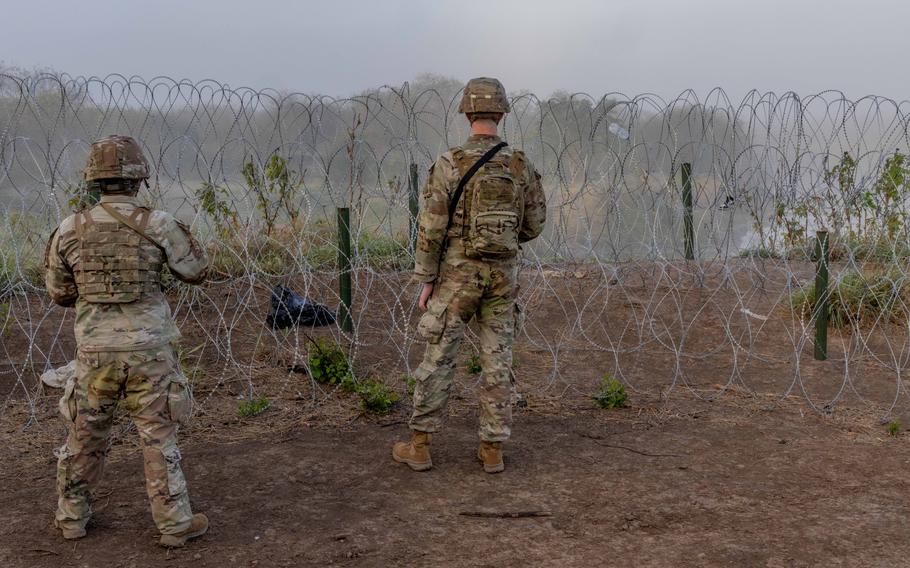
Soldiers scan a known crossing point of the Rio Grande River in Brownsville, Texas, on Feb. 25, 2025. (Andrew Sveen/U.S. Army)
AUSTIN, Texas — Another 1,140 soldiers working in support and sustainment jobs will deploy to the U.S.-Mexico border to help federal agents, the military announced Friday.
The troops — from five bases across the country — will join 4,200 soldiers and Marines already working in support of Customs and Border Protection. Once in place, they will provide coordination of logistical support, field feeding support sites and control logistical movement.
“The [Defense Department] continues to work with the Department of Homeland Security to fill critical capabilities gaps at the southern border in accordance with President [Donald] Trump’s executive order ‘Protecting the American People Against Invasion,’ ” according to a statement from U.S. Northern Command, the combatant command leading the southwest border mission.
Earlier this month, the 10th Mountain Division’s headquarters battalion deployed 500 troops from Fort Drum, N.Y., to Fort Huachuca in Arizona to serve as the border mission’s Joint Task Force Headquarters. The majority of the 1,500 troops sent to the border last month included military police and engineers.
Army units preparing to deploy include:
• 101st Division Sustainment Brigade, Fort Campbell, Ky.
• Alpha Company, 189th Division Sustainment Support Battalion, Fort Bragg, N.C.
• Bravo Company, 68th DSSB, Fort Carson, Colo.
• Charlie Company, 129th DSSB, Fort Campbell, Ky.
• Headquarters and Headquarters Company, 264th Combat Sustainment Support Battalion, Fort Bragg, N.C.
• 70th Movement Control Team, Joint Base Langley-Eustis, Va.
• 564th Quartermaster Company, Joint Base Lewis-McChord, Wash.
The mission at the southwest border began in 2018 during Trump’s first term in office and continued under former President Joe Biden. When Trump returned to the White House on Jan. 20, about 2,500 National Guard troops remained along the border.
On Trump’s first day back, he signed an executive order declaring an emergency at the border and ordered additional active-duty service members be deployed to “seal the border.”
This work is separate from roughly 5,000 Texas National Guard members deployed in their state under Gov. Greg Abbott’s direction. There is coordination between the two efforts, according to Maj. Gen. Thomas Suelzer, commander of the Texas National Guard.
“We are integrating and sharing information so that I can provide my best military advice to the governor of what the future looks like on the border,” Suelzer told state senators on Thursday during a hearing.
That has included Texas officers meeting with NORTHCOM, U.S. Army North and the 10th Mountain Division, he said.
Unlike federal troops, Texas Guard members have been deputized to arrest and detain migrants. Whether the state plans to cede some of its efforts to the federal troops will depend on what authorities they have, Suelzer said.
An 1878 law — known as the Posse Comitatus Act — bars troops from serving in law enforcement roles in the U.S., so deployed service members primarily work to support Border Patrol with work that includes detection and monitoring, data entry, training, transportation, vehicle maintenance, warehousing and logistical support.
However, Trump asked the military in his executive order to report to him within three months on whether he should invoke the Insurrection Act of 1807, which allows the president to deploy the military domestically for civilian law enforcement.